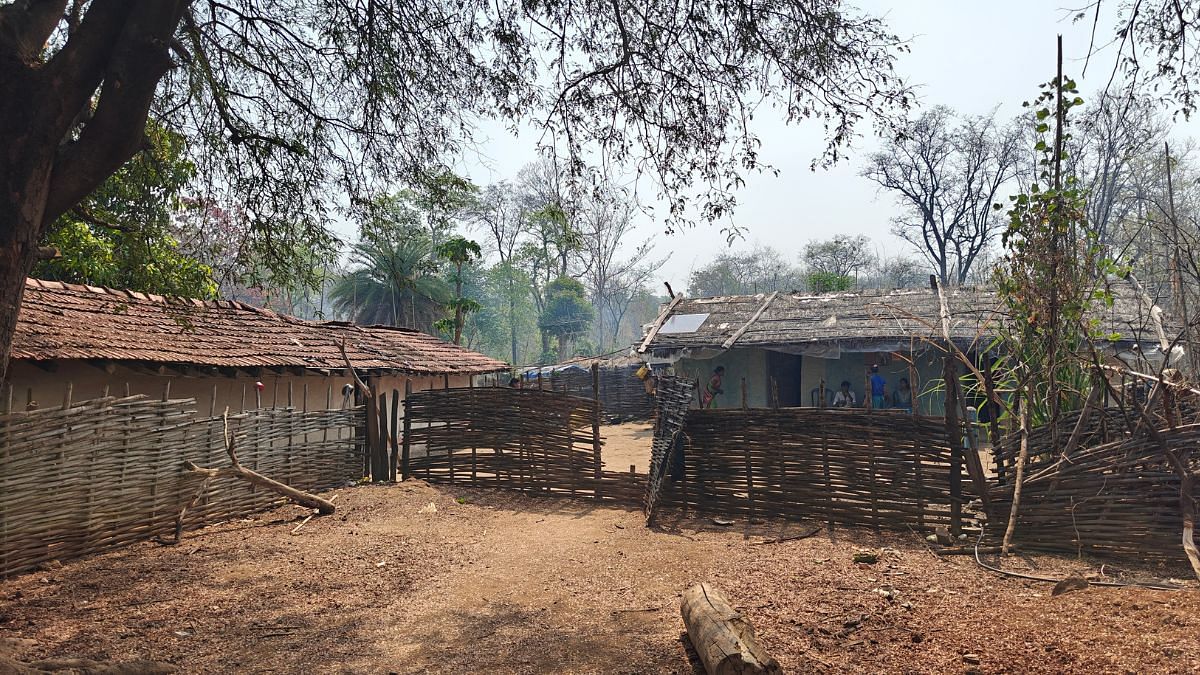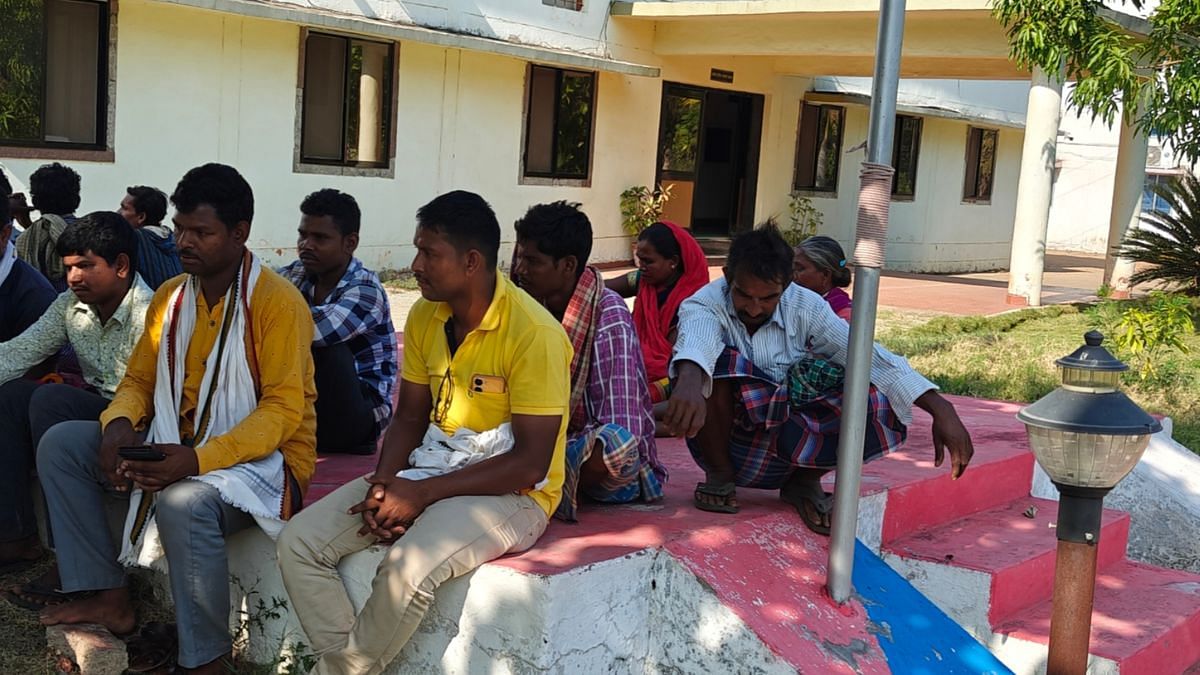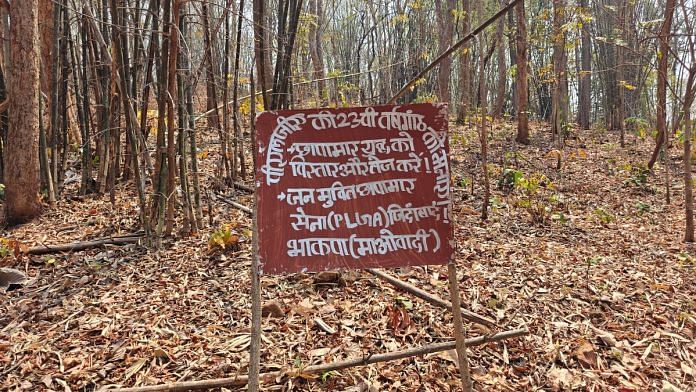Hapatola, Kanker: In the dense forests of Chhattisgarh’s Kanker district, a sombre mood blankets the village of Kalpar following an operation by security forces that resulted in the deaths of 29 Maoists. Among those killed were Janila Nuruti and Bajnath Padda, aged 15.
Located deep inside Maoist territory, Kalpar is part of a cluster of sparsely populated villages, separated from Kanker’s Chhotebethiya and Pakhanjur areas by the Kotri river. Deprived of basic infrastructure, villagers here are now faced with a new reality.
At around 1.30 pm Tuesday, heavy exchange of gunfire took place between Maoists and security forces during a joint operation by District Reserve Guard (DRG) and the Border Security Force (BSF), resulting in 29 deaths on the Maoists’ side. Officers engaged in anti-LWE (Left Wing Extremism) operations said they believe the gunbattle has changed the equilibrium in the Abujmarh forest that has been an unsurveyed and unconquered territory for the security forces — leading to it becoming a hotbed of Maoist activities.
Sources in the security establishment told ThePrint, that all forces including the BSF, Central Reserve Police Force (CRPF) and others who have an anti-Maoist operations mandate, have started moving their camps inside Abujmarh and as a result, Maoists could slowly be encircled from all sides, including in Gadchiroli in Maharashtra.

When ThePrint visited Kalpar, Binagunda, Hidur and Hapatola villages Friday, villagers from Hapatola and Binagunda remained tight-lipped about that fateful afternoon but admitted that they were aware of the joint operation.
One enters these villages by passing flags of the Communist Party of India (Maoist) and various memorials constructed by Maoists to reinforce their stranglehold on the region. However, the eerie silence in the village speaks volumes, pointing to the scars of a gunbattle that has left indelible marks on the soil, but also on the psyche of the people.
Also Read: Chhattisgarh Maoists’ den breached for first time — how the Abujmarh operation was executed
‘Too young to fight’
Kalpar village is nearly four kilometres from Kotri river, passing through narrow passages created between trees and filled with rocks to ensure the track stays for a long time.
Here, a solemn gathering of 20 men Friday performed the post-burial rites for Janila Nuruti.
Janila, the youngest of seven siblings, had left her home to join the Maoists after the harvest season last year — the date of her departure lost to the memories of her grieving family. However, ThePrint has learnt that Maoists dropped her home just three days later citing her young age and saying that “she was too young for the mission”.
“When she came back, she promised not to return but she quickly went back,” Mithun, Janila’s elder brother, translated his mother’s words in Hindi to ThePrint. “She had also updated her Aadhaar card in those three days and we did not think she could return.”
Mithun added that he got to know of his sister’s death when a relative showed him a WhatsApp post about the operation.

During the pandemic, Mithun had taken her to Binagunda in Narayanpur for education when he went there to help his uncle. However, she moved back to Kalpar after a few months. Some villagers suggested it might be possible that she came into contact with Maoists in Binagunda, which has been known to be a hotbed for LWE activity.
Meanwhile, villagers in Kalpar maintained that none of them had even touched the outer boundary of a school, let alone study inside one. The situation was no better in Binagunda, on account of a lack of teachers. Villagers there said they even donated money and collected funds to hire the only person who was a fifth-pass as a teacher, but in vain.
Others killed
Bajnath Padda, born in May 2009, was one of the 29 Maoists killed in the joint operation. His mother was asked to appear at the Kanker district police HQ for identification of his body. Belonging to the Wittekal village in Narayanpur that encircles the site of operation from three sides, Padda left home two months ago without telling anyone, never to return.
“The first information I got about him was when villagers informed me that his photo had appeared on the list of persons killed, on their mobile phones,” his mother Budhani Salam told ThePrint. People who accompanied her to the district police office said the police released photographs of the deceased Maoists through village panchayat networks.
The story of Gita, who has been declared a senior leader by The People’s Liberation Guerrilla Army (PLGA) — armed wing of the Communist Party of India (Maoist) — adds another layer to this tapestry of loss. Her family, now reduced to her brother and cousins, also learned of her death through a message being circulated in the village. This was confirmed by her brother Punau Ram and cousins Dasau Ram and Bisau Ram.

Gita, who had left home in 2002 and returned only once in 2014, had become estranged from her family following the demise of her parents. She lost her father at a young age and her mother died in 2016. Asked if her mother or others tried to stop her from going back in 2014, her brothers said that the “situation was not the same as it is now”.
“At that time, it was only these people (Maoists) in our area, who used to control and govern the area. It was all forests and there was no camp. Even the road came to our village in 2019, so nobody could anticipate that forces would come there and install camps and that there could be an end to their rule in the area,” Bisau Ram told ThePrint.
Also Read: School dropout with ‘weakness for money’ — who was Maoist Shankar Rao, killed in Bastar operation
Villagers fear reprisal
The joint operation has sparked a wave of speculation among villagers, who questioned why security forces made no declaration about Maoists who might have surrendered.
A hesitant voice among the villagers suggested that contrary to the official narrative, some of the Maoists might have offered to surrender during the joint operation. “If 35-40 people were encircled and the exchange of fire began, there would have been some members looking to surrender and that has been the trend of Naxal operations. How is this possible that there was only killing and some fled while no one surrendered,” asked the villager.
Calling the assertion “baseless” the Batsar Range Inspector General of Police, Sundarraj Pattilingam told ThePrint: “Why would we kill if Maoist cadres are opting for surrender? That would be a greater success than eliminating them. We have always tried to protect lives and have opted for fire only in retaliation and self defence from Maoists’ bullets.”
The predominant fear, however, is of a potential backlash from the Maoists.
Villagers express anxiety over being caught in the crossfire. After such operations, security forces often say that they acted on intelligence, casting a shadow of doubt over villagers, who then become targets of Maoist suspicion and are accused of being state informers.
Villagers pointed out that Maoists have carried out multiple killings in the name of eliminating the mole from their stronghold. They cited the killings of three such people from Morkhandi village under the same Chhotebethiya police station last November.
“We are dealing with threats from both sides. On one hand, security forces treat us on par with Maoists just because we come from the villages that fall under their (Maoist) stronghold; on the other hand, Maoists look at us with suspicion and hurt us even at the slightest suspicion,” said another disgruntled villager.
(Edited by Richa Mishra)
Also Read: Swap vehicles, change meeting venue — how Bastar’s politicians give Maoists the slip in poll season



